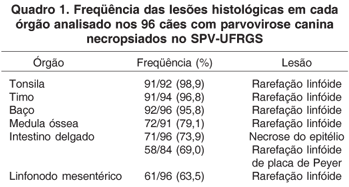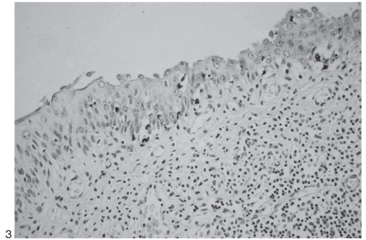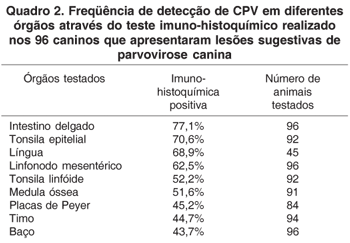Ninety-six dogs with gross lesions suggestive of canine parvovirus infection were selected and necropsied in the Faculty of Veterinary Medicine, Universidade Federal do Rio Grande do Sul, between March 2005 and November 2006. The main gross lesions were enlargement of the Peyer's patches in the small intestine and hyperemia in the intestinal mucosa and serosa. Microscopically, the small intestine showed necrotizing enteritis in 77% (74/96) of the dogs examined. However, in 17.7% of the histological evaluation in the small intestine were damaged due to autolytic changes making it difficult to obtain an appropriate interpretation. The immunohistochemistry test was performed in tissues of small intestine, mesenteric lymph nodes, thymus, spleen, tonsils, tongue, and bone marrow in all the 96 selected cases. Parvovirus antigen was detected in 91.6% (88/96) of the dogs necropsied. The best result of the IHC test was seen in samples of small intestine which was positive in 77% (74/96) of the cases. The statistical analysis (Fisher test) showed a weak association between intestinal autolysis and positive result of the IHC test. The chance of the autolysed intestine showing a positive result in the immunohistochemistry test was 0.33 less (OR=0.33, 95% CI:0.10-1.17) when compared with small intestine not autolysed.
Canine parvovirus; dogs; immunohistochemistry; small intestine; lymphoid tissue










